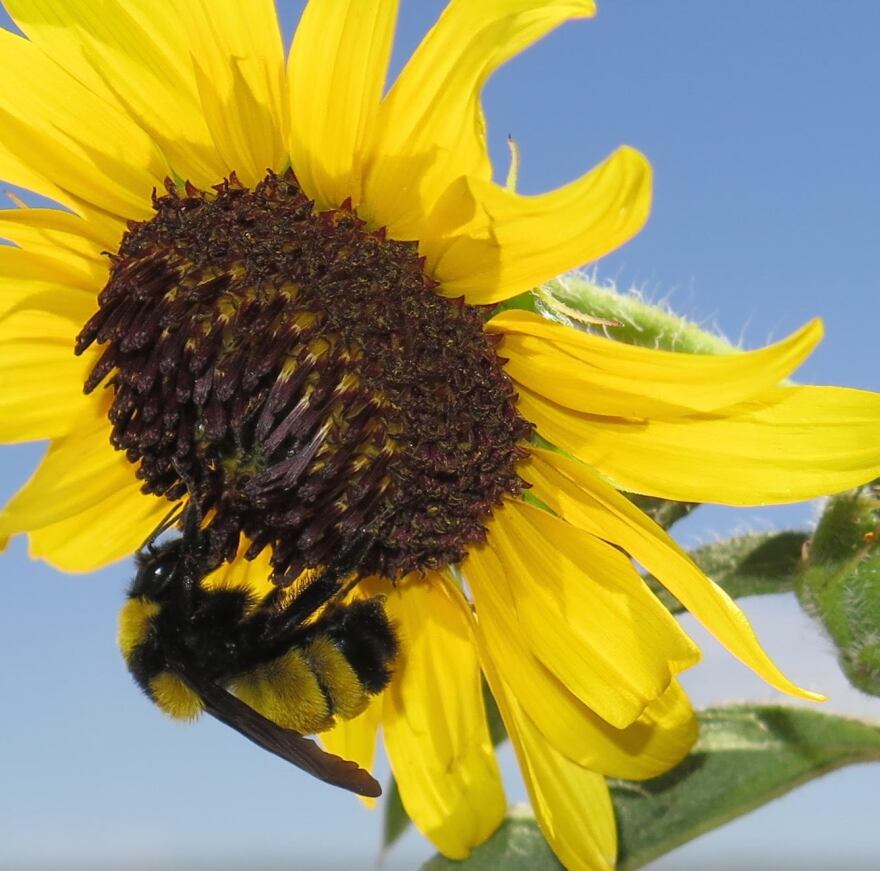We’ve heard a lot about honeybees and how important they are as pollinators. But bumblebees pollinate wildflowers and crops, too, and some kinds of bumblebees are in trouble.
Scott McArt is an assistant professor of pollinator health at Cornell University. He says that bumblebees can be extremely important pollinators for certain crops.
“So, for example, the vast majority of tomatoes that you will buy at the grocery store are pollinated exclusively by bumblebees,” he says.
In a new study, McArt found that fungicides could be playing a role in the declines of four species of bumblebees. He and his team looked at two dozen environmental factors to understand why these species are declining.
“We have this excellent data set; this data set includes 10,000 individual bumblebee samples. And believe it or not, someone has actually gone through all of these 10,000 bees and pulled out their guts, and looked for the prevalence of a particular pathogen, this Nosema pathogen. It’s a microsporidian, it’s related to a fungus.”
They used the data set to look for landscape predictors.
“So the things that were around the different sites that these bumblebees were actually collected, and looked at the predictors of what was associated with this particular pathogen,” he says.
McArt says most fungicides are relatively non-toxic to bees, but there can be problems for bees when fungicides interact with insecticides. He explains that some pesticides can have synergistic interactions which can lead to up to a thousand-fold increase in toxicity.
“So if you look in the pollen and look in the nectar that the bees are bringing back to the colonies, we’re finding that there’s a lot of pesticides that are coming back,” he says.
McArt says there’s a still a lot to learn about the problem before they can figure out how to stop it.
“In the combination of those fungicides and insecticides, we don’t know a lot about how these synergisms are actually occurring. So how often these synergisms are occurring and what types of toxicities result from these synergisms. This is sort of a new area of research that pollinator health is going into right now,” he says.
You can listen to our interview with Scott McArt above.





